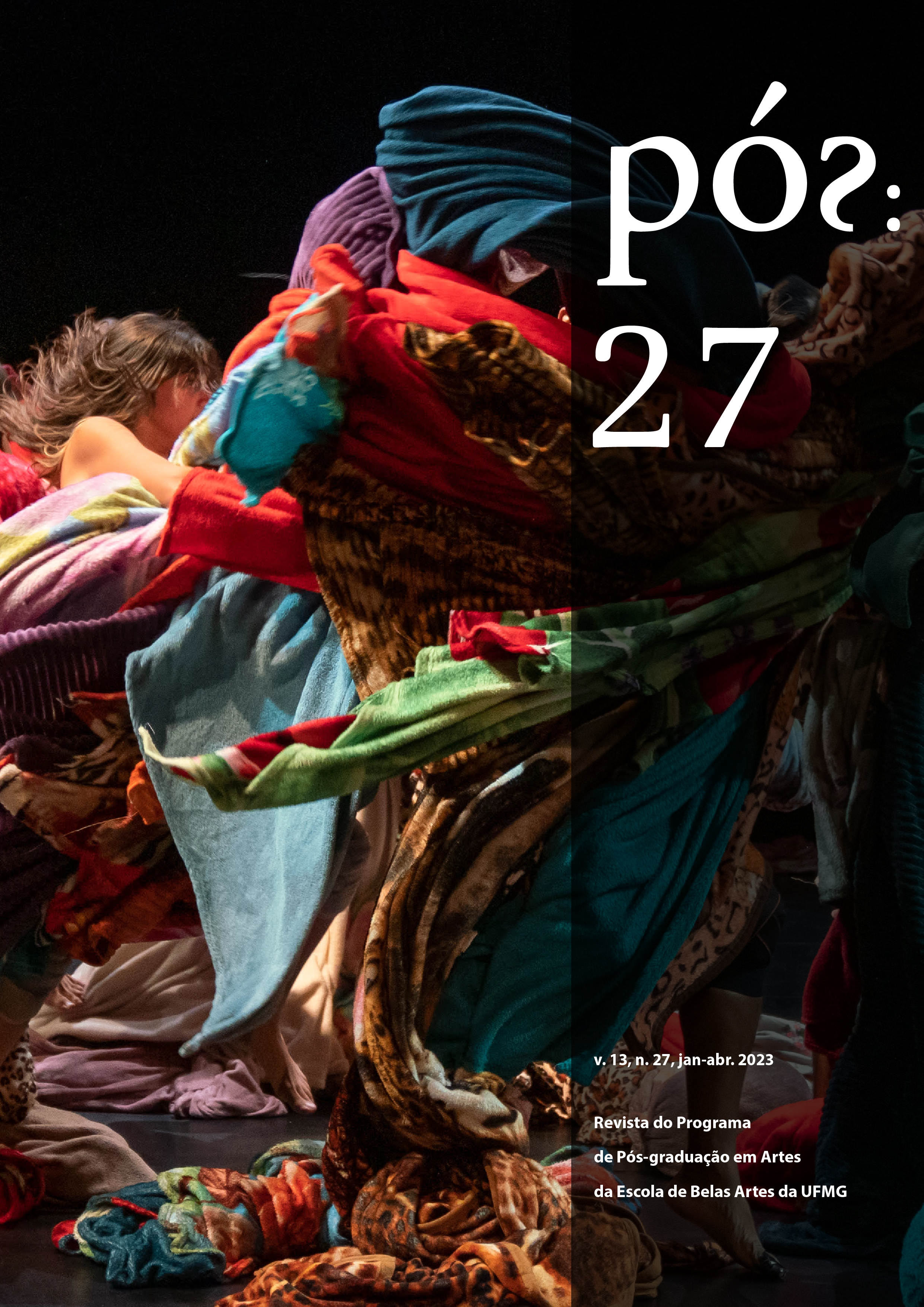One country and one city
Brazilian immigrants in Japanese 21st century films
DOI:
https://doi.org/10.35699/2237-5864.2023.41167Keywords:
Japanese cinema, cinematographic space, immigration, film editingAbstract
The films The City of Lost Souls (2000) directed by Takashi Miike and Goldfish Go Home (2012) by Shōhei Shiozaki share a common theme about the life of Brazilians in Japan. They were both directed by Japanese filmmakers in two specific moments in the context of the Brazilian immigration to Japan, which is ongoing since 1990. Despite their commonalities, the two films present different aesthetic views that lead to contradictory understandings about the interaction of Japanese and Brazilians in Japan. This article brings into discussion how establishing shots and spatial continuity express these views in the films. Establishing shots are the starting point to recognize the location of scenes and actions in films. The aim here is to show how diegetic space and spatial continuity built by film editing are essential elements in representations of interaction between foreigners and nationals. This analysis is based on the spaces represented, their historical and cultural characteristics and some of the political implications of these representations.
References
ALDOUS, Christopher. 'Mob rule' or popular activism? The Koza riot of December 1970 and the Okinawan search for citizenship. In: HOOK, Glenn D.; SIDDLE, Richard (Ed.). Japan and Okinawa: Structure and subjectivity. Londres, Nova York: Routledgecurzon, 2003. p. 148-166.
AMANCIO, Tunico. O Brasil dos gringos: Imagens no Cinema. Niterói: Intertexto, 2000.
BORDWELL, David. The way Hollywood tells it: story and style in modern movies. Berkeley e Los Angeles: University Of California Press, 2006.
BORDWELL, David; THOMPSON, Kristin; SMITH, Jeff. Film art: an introduction. Nova York: Mcgraw-hill Education, 2017.
BRUNO, Giuliana. Atlas of Emotion: journeys in art, architecture and film. Nova York: Verso, 2018.
CORDARO, Madalena Hashimoto. Mitate: A retórica japonesa da repetição renovada. Ars (são Paulo), São Paulo, v. 11, n. 21, p.44-60, 2013.
DOANE, Mary Ann. The Close-Up: scale and detail in the cinema. Differences, [S.L.], v. 14, n. 3, p. 89-111, 1 jan. 2003. Duke University Press. http://dx.doi.org/10.1215/10407391-14-3-89.
GEROW, Aaron. The homelessness of style and the problems of studying Miike Takashi. Revue Canadienne d'études cinématographiques / Canadian journal of film studies, Ottawa, v. 18, n. 1, p.24-43, 22 set. 2009.
HALL, John Whitney. Japan: From Prehistory to Modern Times. Tóquio: Tuttle Publishing, 1971.
ISHI, Angelo. Reflexões sobre os 20 anos do Movimento "Dekassegui": A Perspectiva de um Brasileiro Radicado no Japão. In: Fundação Alexandre de Gusmão (Ed.). 20 anos dos brasileiros no Japão. Brasília: Funag, 2010. p. 11-20.
JAMESON, Fredric. Postmodernism or, the cultural logic of capitalism. 2. ed. Londres, Nova York: Verso, 1991.
KAWAMURA, Lili Katsuco. Para onde vão os brasileiros?: Imigrantes brasileiros no Japão. Campinas: Editora da Unicamp, 1999.
KISHIMOTO, Alexandre; HIKIJI, Rose Satiko Gitirana. Nikkeis no Brasil, dekasseguis no Japão: identidade e memória em filmes sobre migrações. Revista Usp, [s.l.], n. 79, p.144-164, 1 set. 2008. Universidade de Sao Paulo Sistema Integrado de Bibliotecas - SIBiUSP. p. 144-164.
KO, Mika. Japanese cinema and otherness: nationalism, multiculturalism and the problem of Japaneseness. Abingdon: Routledge, 2010.
LESSER, Jeffrey et al. Searching for home abroad: Japanese Brazilians and transnationalism. Durham, Londres: Duke University Press, 2003.
MELLO, Cecília. The Cinema of Jia Zhangke: realism and memory in chinese film. Londres e Nova York: Bloomsbury Academic, 2019.
PUDOVKIN, V. I.. Film technique and film acting. Nova York: Grove Press, 1958. Traduzido e editado por Ivor Montagu.
WILLIAMS, Tony. Takashi Miike's cinema of outrage. Cineaction, Toronto, v. 1, n. 64, p. 54-62, mar. 2004.
YAMAZAKI, Takashi. The historical representations of place in the military base town of Koza: the 'reassessment' of u.s. military presence as a developmental resource. Journal of urban culture research: The Art of Development: Exploring the Role of Culture and the Arts in Sustainable Com- munity Development & Social Transformation, Banguecoque, v. 1, n. 1, p. 190-199, jan. 2010. Disponível em: http://www.cujucr.com/downloads/JUCR%20Vol1%202010-F.pdf. Acesso em: 7 dez. 2020.
YAMATOKINGYOEN. About Koriyama Goldfish Museum. Disponível em: <https://www.kingyoen.com/en/about.html>. Acesso em: 07 dez. 2020.
Downloads
Published
How to Cite
Issue
Section
License
Copyright (c) 2023 Alexandre Nakahara, Cecília Mello

This work is licensed under a Creative Commons Attribution-NonCommercial 4.0 International License.
Authors who publish in this journal agree to the following terms:
- Authors retain copyright and grant the journal the right of first publication, with the work simultaneously licensed under the a Creative Commons Attribution-NonCommercial 4.0 International License that permits sharing of the work with acknowledgement of authorship and initial publication in this journal;
- Authors are permitted to enter into additional contracts separately, for non-exclusive distribution of the version of the work published in this journal (e.g., the Creative Commons Attribution License).
- Authors are permitted and encouraged to publish and distribute their work online (e.g., in institutional repositories or on their home page) at any point before or during the editorial process, as this may generate productive changes as well as increase the impact and citation of the published work.
- It is the responsibility of the authors to obtain written permission to use in their articles materials protected by copyright law. Revista PÓS is not responsible for copyright breaches made by its contributors.











